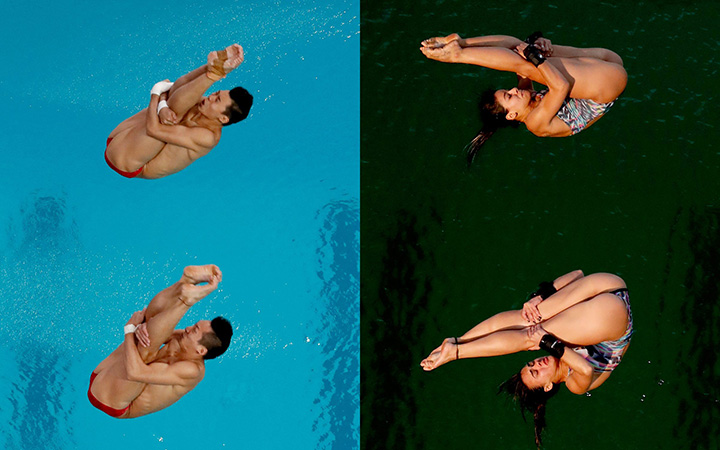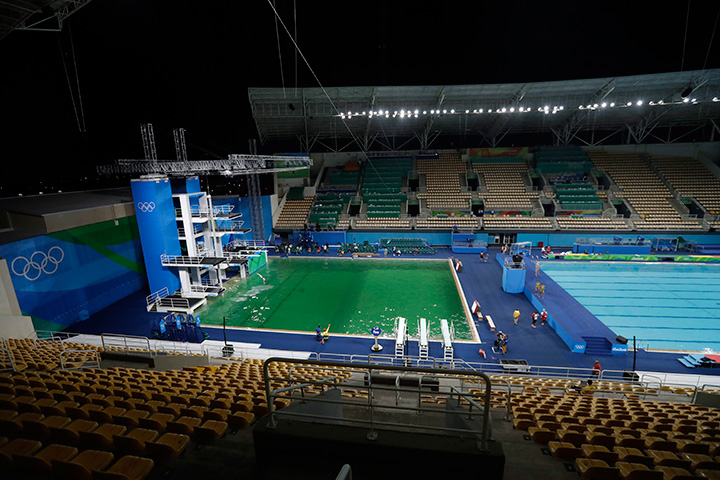A second pool at the Rio Olympics has started to turn green less than 24 hours after the diving tank turned swamp-like at the Maria Lenk Aquatics Centre on Tuesday.

The water polo event pool began to change from clear blue to a murky green on Wednesday during the fourth day of event competition. The pool is adjacent to the diving tank at the aquatics centre, where the water remains green.
During the women’s 10m synchronized diving final on Tuesday afternoon, the pool water turned murky and deep green during the competition.
Though, at first, Olympics officials did not comment on the colour of the water, many speculated the water issue had to do with chlorine and pH balancing of the pool. Cloudy pool water could also be the result of a bad filtering system.
READ MORE: 50 shades of green? Olympic diving pool appears to be filling with algae
Olympics officials later said algae growth was most likely the issue.
According to Cassidy Franks, operations manager at Toronto-area swimming pool design and installation company Pool Craft, the water discolouration is most likely due to a chlorine imbalance, resulting in the presence of algae.
“It’s basically the chlorine in the water… if it doesn’t have the chlorine in the water or if there’s a filtration issue where it’s not filtering the pool and turning over the water then that’s also going to cause the pool to turn from blue to green,” Franks said.
Franks explained the discolouration is an indicator of algae growth.
“The lack of chlorine allows the algae to feed on the oils, people’s skin, sweat…it can turn (colour) that quickly very easily,” Franks explained. “Especially if there’s a high volume of bathers in the pool, if you have a high bather load in the pool then within a couple of hours, if that pool is not being treated properly, then that can definitely cause the pool to turn green very quickly.
Franks explained that warm temperatures would also be a factor in the growth of algae.
“On warmer days the chlorine would definitely be used up quicker,” Franks said. “The warmer the water is the more it’s exposed to the sun…the hotter that it is the faster the chlorine burns off. So, if you’re not consistently having a slow release of an amount of chlorine put in the pool to accommodate for the high bather load and high temperatures, then within a day you could see it turn from blue to green.”
READ MORE: Meaghan Benfeito and Roseline Filion win synchronized diving bronze
On Wednesday, the international governing body for aquatics known as FINA, said “the unusual water colour” was due to a chemical imbalance.
Pool water should have a minimum chlorine or bromine concentration of 2.0 parts per million and a pH level between 7.2 – 7.8.








Comments